
Quantum magnets
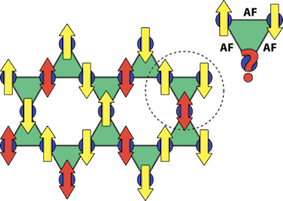
This illustration depicts magnetic ions arranged on a Kagome lattice composed of equilateral triangles. The magnetic ions exhibit antiferromagnetic interactions, signifying a preference for alignment in the opposite direction to their neighboring ions. However, the unique geometry of the Kagome lattice makes this antiferromagnetic alignment unattainable, giving rise to frustration that thwarts the establishment of conventional magnetic order. Consequently, the system persists in a fluctuating state even at extremely low temperatures. The ultimate expectation is that, at these low temperatures, a quantum mechanically entangled quantum state will emerge, offering intriguing possibilities for exploring exotic phases of matter.
Unconventional superconductivity
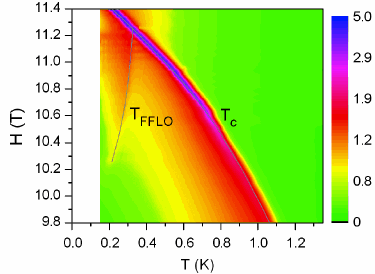
In conventional superconductors, the lattice vibrations or phonons are responsible for superconductivity. In unconventional superconductors, a different mechanism is at play.
As a consequence, the superconducting phase diagram in an applied magnetic field can become complicated, such as shown here for the case of CeCoIn5.
Strongly correlated semiconductors
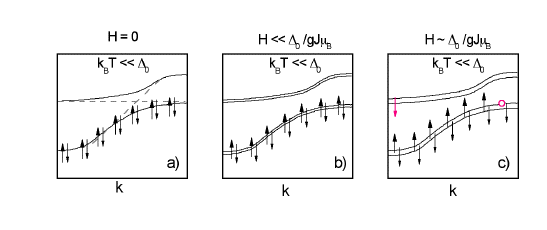
The band gap in strongly correlated semiconductors is due to strong interactions, contrary to normal semiconductors or insulators, where it simply is the consequence of filling of the bands.
Quantum critical points
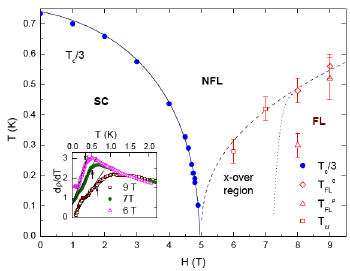
At a quantum critical point a conventional order parameter is suppressed. Once critical temperatures is close to zero, the thermodynamics of the system is dominated by quantum fluctuations.
Quasicrystals
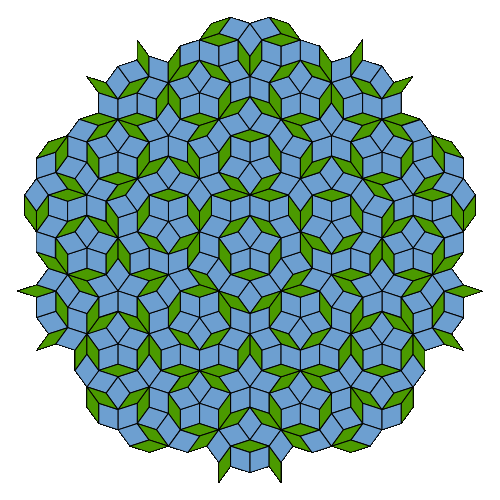
Quasicrystals are self-similar structures that for example in two dimensions are built from assembling two tiles, in comparison to crystals, which are are a periodic repetition of of on tile, the so-called unit cell.
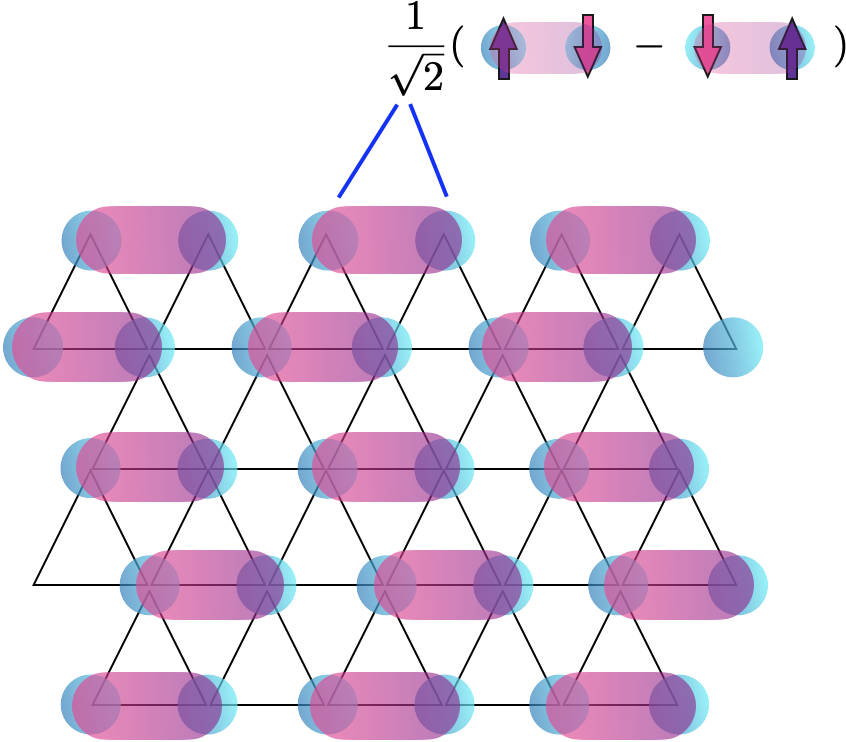
 fr_FR
fr_FR